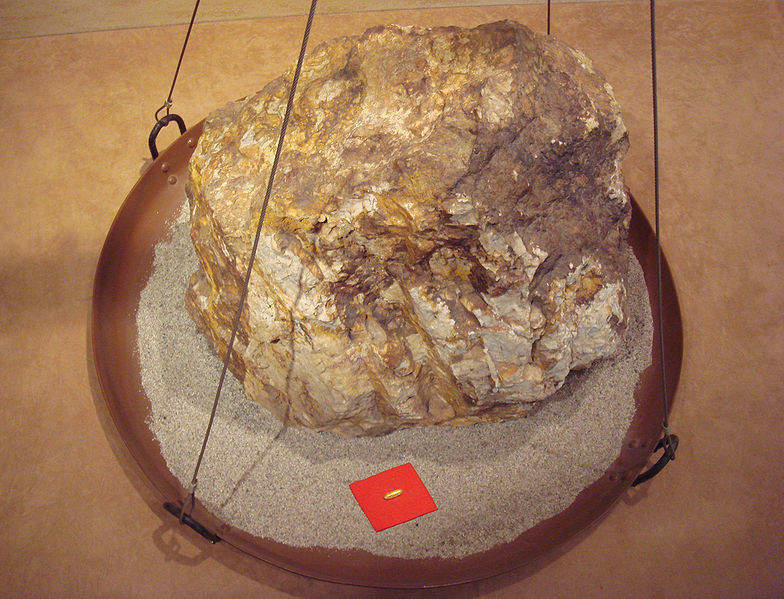Canex Metals, a Canadian junior exploration company, has completed drilling at the Gibson gold-silver project located in central British Columbia.

Image: A gold rock. Photo: courtesy of PHGCOM/Wikipedia.org.
The Company completed 10 holes for 1001 metres of drilling and excavated two trenches during the program. Easy access to the project and proximity to infrastructure helped the Company complete the program ahead of schedule and significantly under budget.
Canex Metals president Shane Ebert said: “This drill program is a critical step in demonstrating the potential of the Project and understanding the nature and orientation of the mineralization. Drilling has intersected multiple quartz-sulfide veins ranging from less than 0.5 metres to over 2.5 metres wide, containing variable amounts of pyrite, sphalerite, galena, with minor chalcopyrite, arsenopyrite, and sulfosalts.
“Trenching and drilling also identified a new zone of quartz-sulfide veining located adjacent to the main Gibson trend, demonstrating excellent exploration potential in the large covered area surrounding the known veins”.
The drill core has been logged and sampled with assay results expected in 8 to 10 weeks.
The Gibson Prospect
The Gibson prospect is 887 hectares in size and located in central British Columbia, approximately 95 kilometres northwest of Fort St. James. The area is accessible via a network of all-weather logging roads.
Gibson contains epithermal gold-silver base metal mineralization hosted in highly altered sedimentary and volcanic rocks adjacent to the Hogem Batholith. The zone was discovered and explored by Noranda Exploration Company from 1989 to 1991.
Noranda drilled 9 holes with 8 of the 9 holes intersecting significant gold and silver mineralization. The best drill intercept returned 4.26 metres grading 6.77 g/t gold and 1828 g/t silver.
Prior to the 2017 trenching program by CANEX no follow up trenching or drilling has been conducted at Gibson since the highly successful Noranda program. Known mineralized zones at Gibson are located within a strong soil anomaly 850 metres long by 500 metres wide, and only a small portion of that anomaly has been explored by trenching or drilling.
The Noranda drill results are reported in BC Assessment report 21762 for Noranda Exploration Company by Stewart and Walker (1991). This drilling was done prior to NI 43-101 and should be considered historic in nature. The results have not been verified by CANEX and should not be relied upon.
Source: Company Press Release
